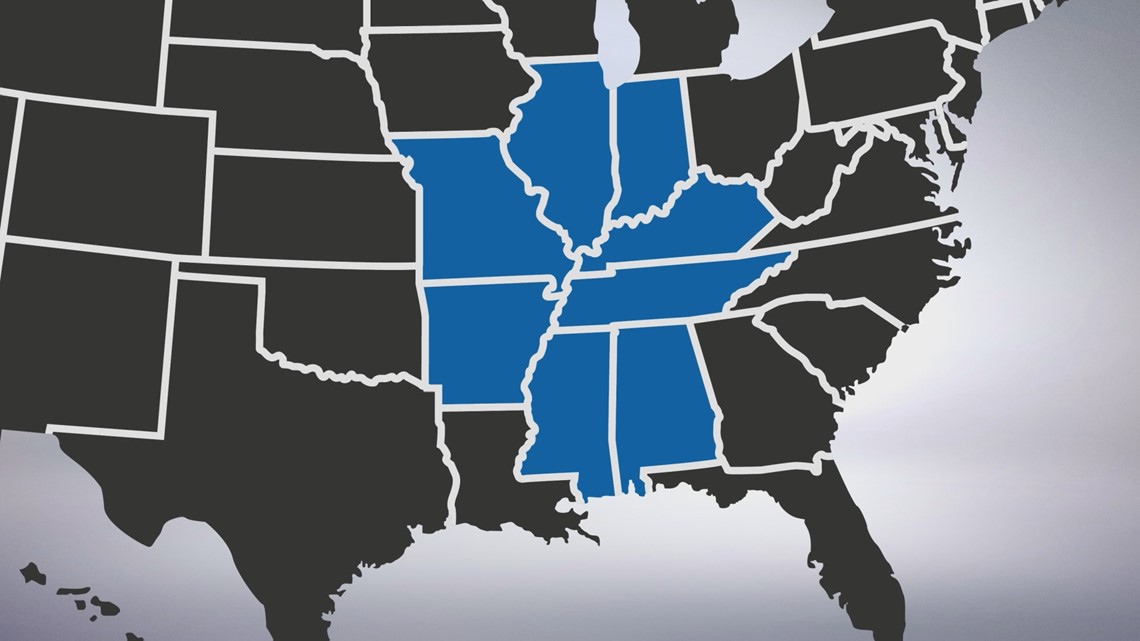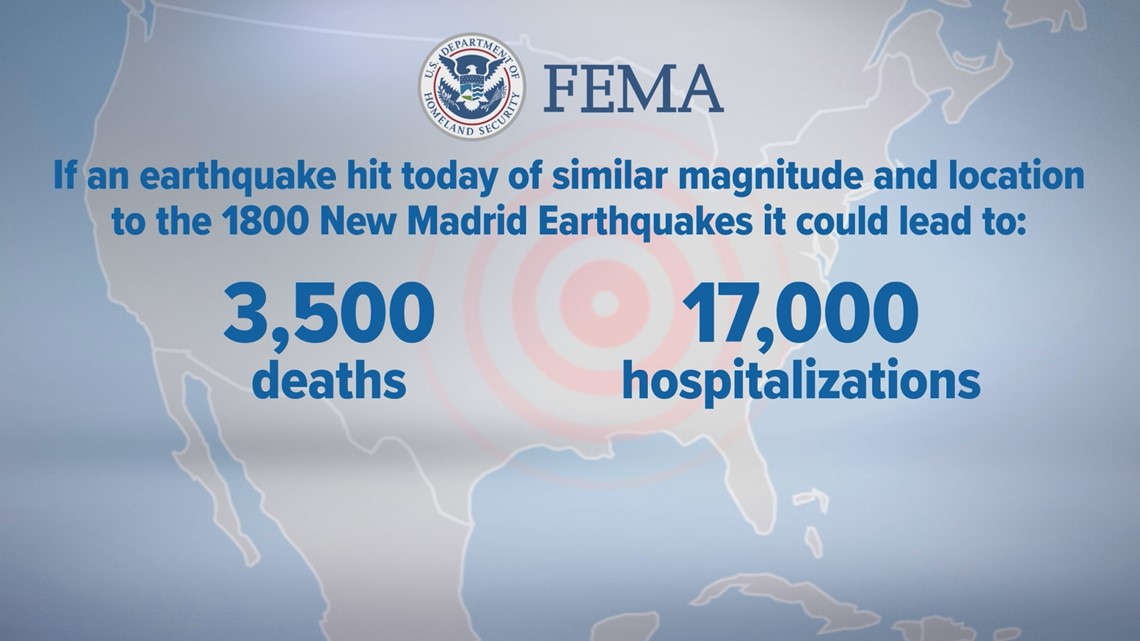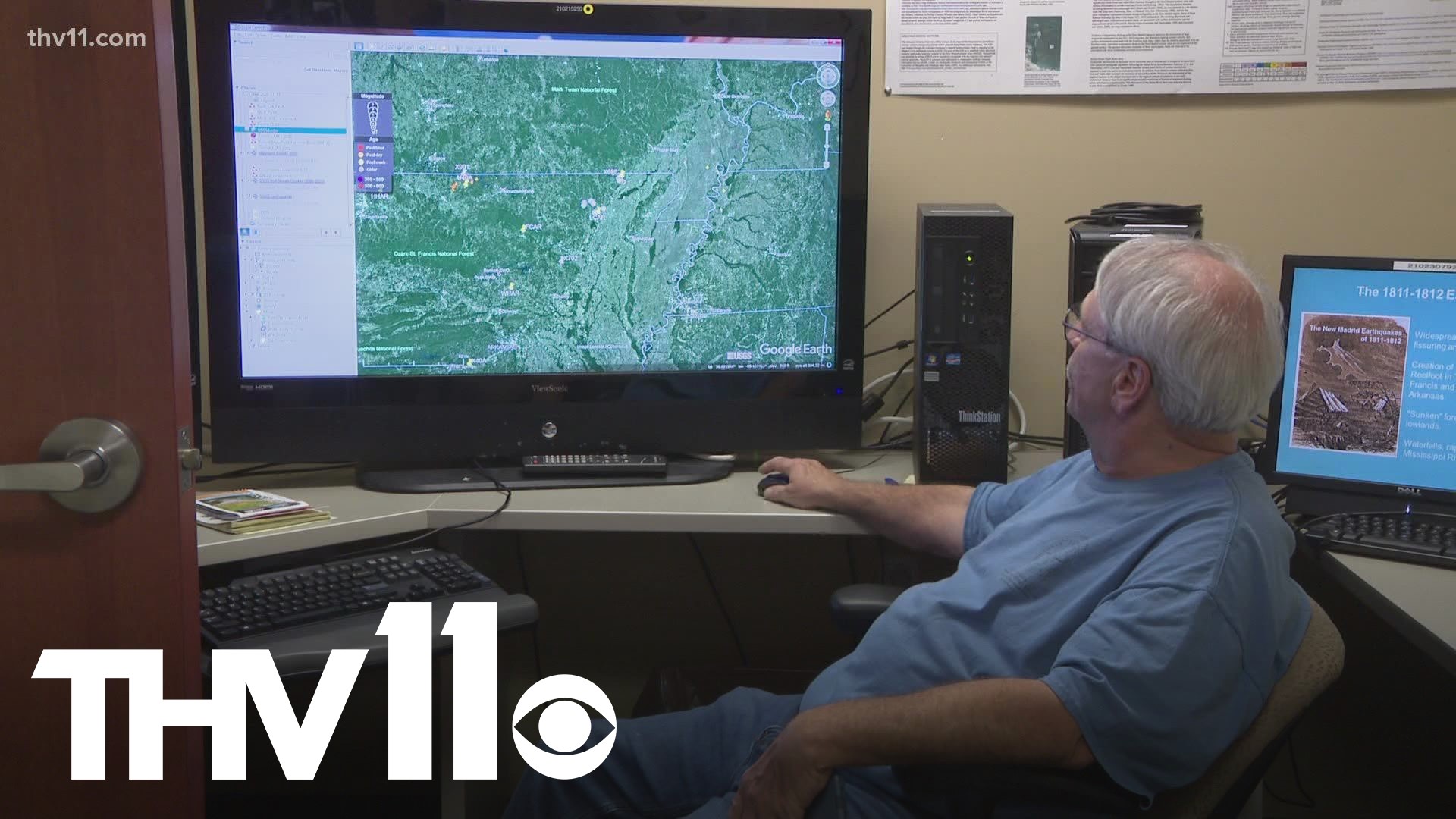ARKANSAS, USA — Recently there's been talk of different "once in a hundred year" events happening around the world— from hurricanes to flooding, and various other natural disasters.
While there have been many claims as to why this could be happening, Hilda Booth with the State Department of Emergency Management said that Arkansans may have to be prepared for this type of event sooner than we think.
Booth explained that she estimates our “once in a hundred-year event” is not an “if" but rather a "when.”
“Most scientists agree that we're overdue for at least a 6.0 earthquake,” she added.
Booth went on to say that the next "big one" could strike Northeast Arkansas within the next few decades.
“People don't realize that we're sitting on the New Madrid Seismic Zone, where there's a 7 to 10 percent chance that over the next 50 years we'll have a 7.0 or greater magnitude earthquake,” she said.


That’s not all she told us
“The chances go up even greater to 25 or 40 percent when we're talking about a 6.0 or greater earthquake," she explained.
Booth said that though there’s no need to panic at this time, preparation will be key.
An Arkansas Geological Survey helped us figure out what this type of earthquake will look and feel like, and what preparation would be needed.
Scott Ausbrooks, the survey's Director, and State Geologist said that Northeast Arkansas faces the greatest danger.
"It's a lot of farmland, and it's unconsolidated sediment or sand,” he said.
Ausbrooks explained that at around a 3.0 magnitude earthquake, most people will start to feel those effects, and a 4.0 is when you would start to see visible damage.
“Most people don’t understand, we have three dozen to six dozen earthquakes in any given year,” Ausbrroks described.
Though most are too small to feel, he went on to explain that with each magnitude the earthquakes get exponentially greater in force.
With a 6.0 or a 7.0 earthquake as a possibility within the next 50 years, Ausbrooks and Booth both advised that it’s better to be overprepared than underprepared.
“If they've got those basic supplies like food and water and medicines to take care of their family, then the death toll shouldn't be that high,” Booth explained.
According to FEMA, if you've found yourself in an earthquake, there are some things to remember:
- If you're in a vehicle at the time, you should pull over and stop.
- If you're in bed, stay there.
- Never run outside, rather find a safe place indoors.
- Do not get in a doorway.
While preparation could mean the difference between life and death, experts did explain that earthquakes can still be unpredictable— their damage and death are uncertain.
Booth and Ausbrooks explained how history and science are good tools to help keep us prepared.
“Most geologists and scientists look at the past, and the past is an indication of the future," Ausbrooks said.
History is also one of the reasons experts have been concerned a “big one” could be on the way, as the New Madrid Seismic Zone is no stranger to catastrophic earthquakes.
According to geologists, back in 1811 and 1812, the New Madrid Seismic Zone saw 3 of the most powerful earthquakes in recorded history to hit the mainland United States east of the Rocky Mountains.
Experts described the shaking as being so strong that it impacted Northeast Arkansas, but it also stretched well beyond that.
Both Booth and Ausbrooks claimed," The accounts are that there was tremendous shaking. There were reports as far east as Boston, as far south as New Orleans.”
Although there are limited accounts from back then, scientists have determined “they felt it in South Carolina. The Mississippi River even backed up. I mean there was just devastation,” Booth said.
These earthquakes predate the development of the seismograph, so experts estimate these earthquakes were between a 7.0 and an 8.0 magnitude, with thousands of aftershocks.
“There were some parts of the land that were uplifted, so it was a complete disruption of the land,” Ausbrooks described.
A scientific study commissioned by FEMA showed that if an earthquake hit today of similar magnitude and location to the New Madrid Earthquakes in the1800s, it could lead to 3,500 deaths and 17,000 hospitalizations.
The study also estimates that 715,000 buildings could be damaged.


These estimates were based on a 2:00 a.m. event, a 7.7M earthquake rupturing the three segments of the New Madrid Seismic Zone.
"We expect the people in Northeast Arkansas to have the most damage and the most affected by it, but really the whole eastern side of the state,” Booth said.
While the magnitude and force of the earthquake could be great, both Booth and Ausbrooks explained that the state is prepared for this type of disaster.
However, both of them agreed that personal responsibility and preparedness will be the real determining factor, and their agencies have been actively working to do their part.
“We monitor the earthquakes and stuff, there are notices that go out, we go to schools, we raise awareness, we let people know what's going on,” Ausbrooks said.
Although experts are concerned that we could see a 6.0 or 7.0 earthquake within the next 50 years. Ausbrooks and Booth both added that it could be sooner or much later.

